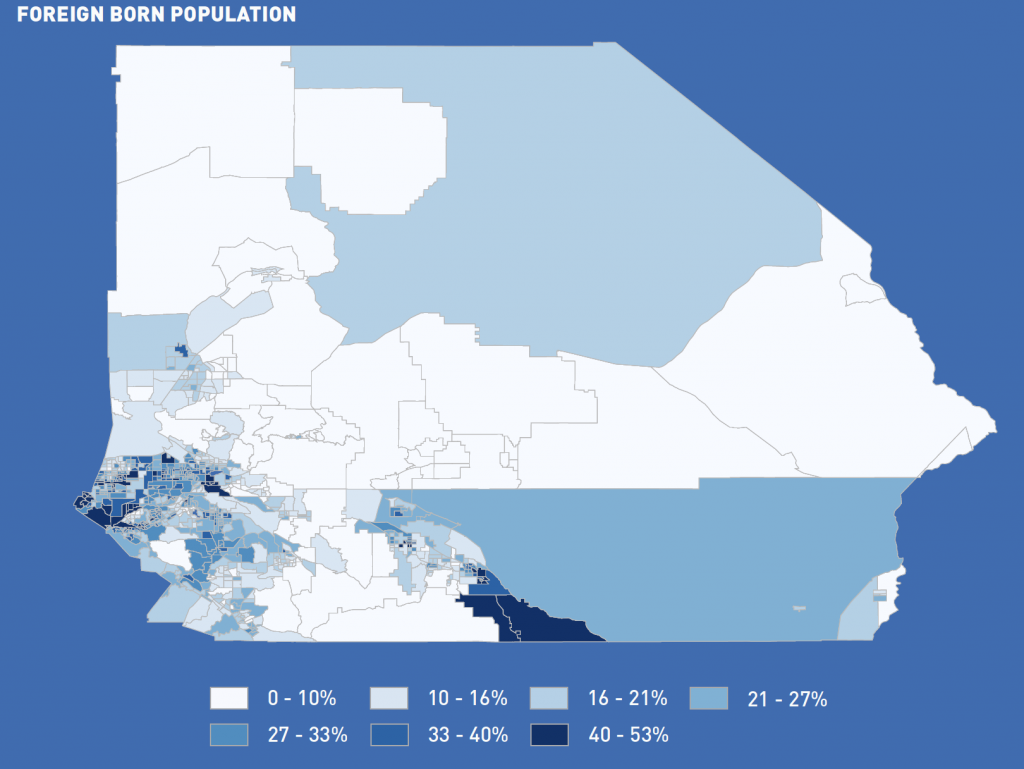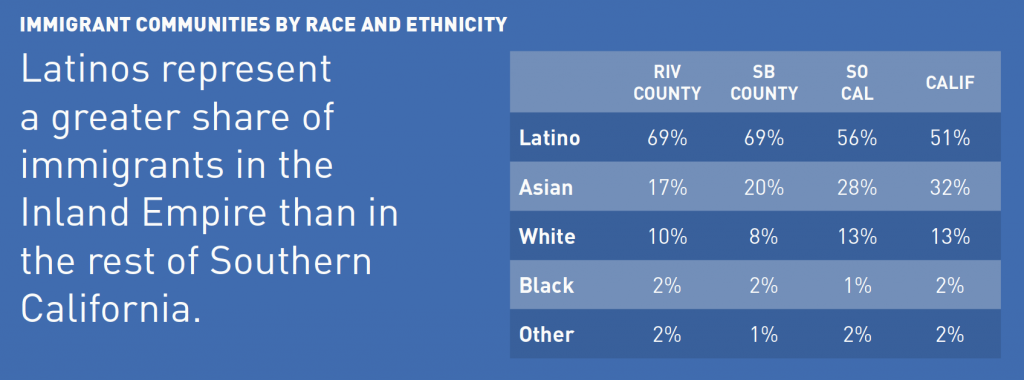One in five residents in the Inland Empire is an immigrant. Migration has been a central feature of the region for centuries, and there are now nearly 1 million immigrants living in Riverside and San Bernardino counties. As in decades past, the region’s economic strength and cultural vitality depends on the contributions of immigrants and native born alike.
At the same time, the incorporation of immigrant communities in the region cannot simply be assumed or taken for granted. The Inland Empire is vast, encompassing over 27 million square miles, an area larger than ten states. In addition, the immigrant population in the region is diverse with respect to national origin, occupation, and areas of settlement.

State of Immigrants in the Inland Empire sets forth the history, resources, and partnerships that support the pressing issues and needs of immigrants in the region. It calls forth key policy issues that have affected—and continue to affect—local immigrant communities. As the region continues to grow, it is important to examine key issues pertaining to its immigrant communities, including poverty, education, employment, and social service needs.
This report provides a brief overview of immigrant communities in the region and their historic, economic, and social contributions, as well as key demographic characteristics and policy considerations. It also highlights various organizations serving immigrant communities in the region and offers personal stories from immigrants voicing their issues and concerns.

State of Immigrants in the Inland Empire is part of an evolving partnership between UC Riverside’s Center for Social Innovation, California Immigrant Policy Center, and the Inland Coalition for Immigrant Justice. This report highlights the uniqueness of the Inland Empire, the vibrancy of its immigrant communities, and key data-driven strategies on immigration policy priorities and opportunities.
Our aim is to provide a solid foundation of data and shared understanding, to better inform the work of public, for-profit, and nonprofit enterprises in the region. For more data and resources on immigrant communities in the region, please visit socialinnovation.ucr.edu/immigrants.
Read the full report here: https://socialinnovation.ucr.edu/state-immigrants-inland-empire
